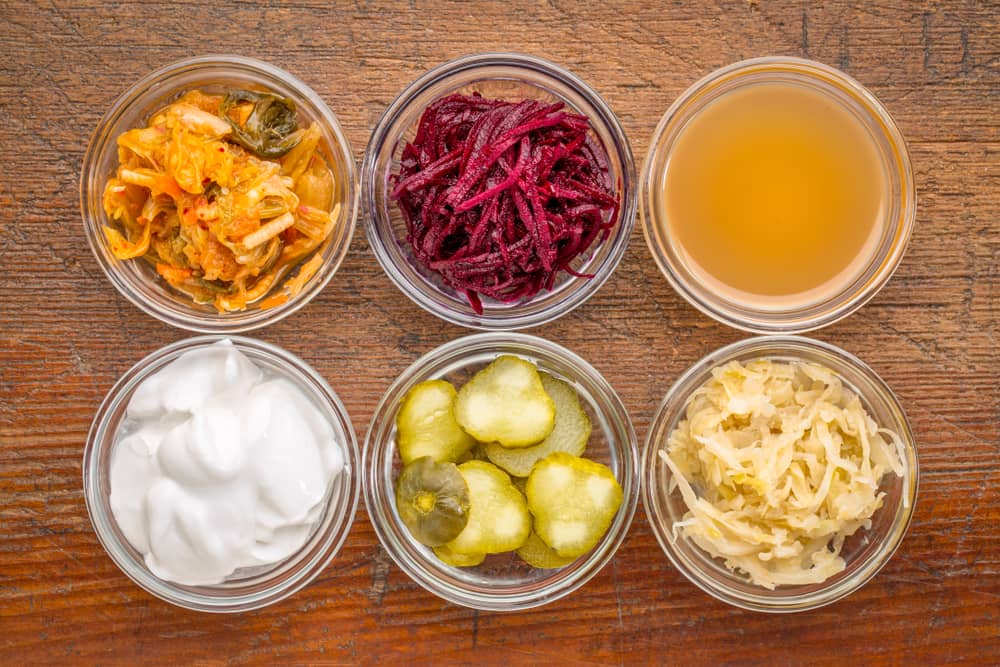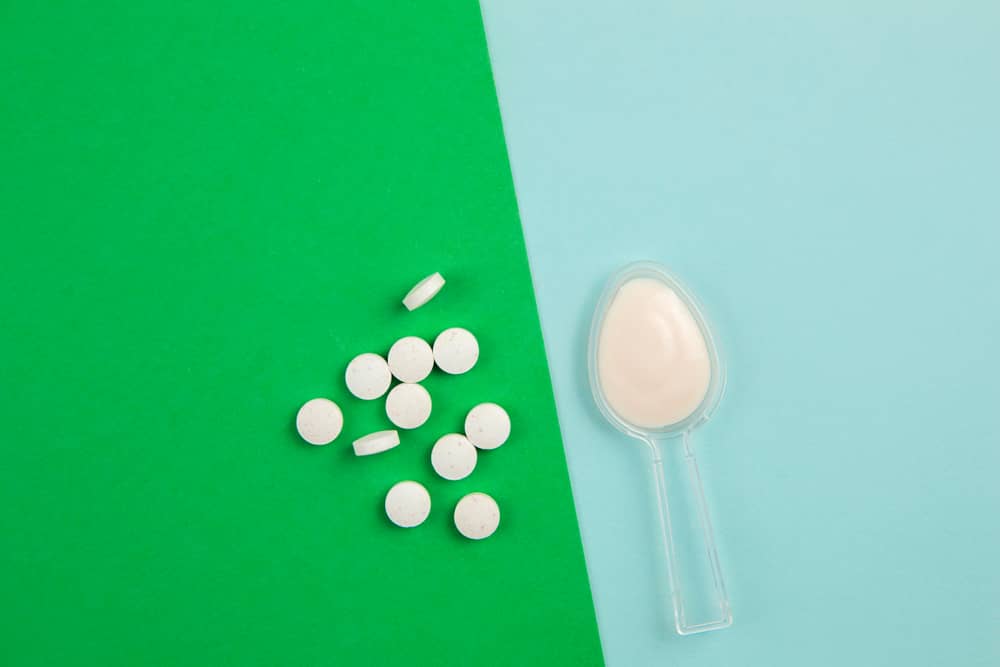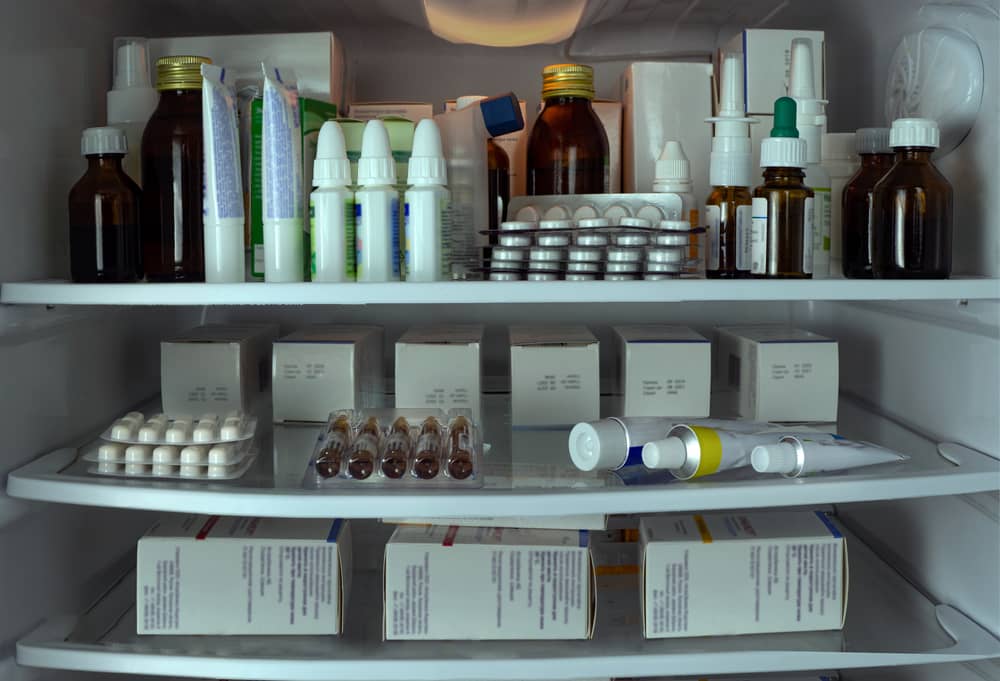Not interested in giving probiotics to your kids? Looking for another alternative? There are plenty of foods with healthy bacteria in them. We’ll explore 10 of them in this article that are super easy to incorporate into their diet.
Key Takeaways
- Probiotics are live microorganisms that can benefit the host when consumed according to the Food and Agriculture Organization of the United Nations and the World Health Organization in 2002.
- There are both healthy and harmful bacteria in your gut.
- A lot of foods have healthy bacteria that you’d find in probiotic supplements.
- The strain of bacteria makes a huge difference in overall effects and results.
- Preliminary research suggests that more healthy bacteria make it to your gut when it’s consumed in food.
Gut bacteria play a very important role in not only you, but also your child’s health. Not all parents may feel comfortable getting probiotics for kids, but, fortunately, these good bacteria can be found in many different types of fermented foods.
The important part is figuring how much food you need to eat in order to get adequate amounts of healthy bacteria into your gut. Keep in mind that the digestive enzymes in your stomach are very acidic and will kill almost all bacteria.
This means that you’ll need to consume a lot of good bacteria for several to make it through the stomach. They also need to find a place in the small intestine to thrive. It’s not as easy as it looks. If you’re thinking of eating probiotic foods to get the healthy bacteria that you need, you’ll need to be mindful of what the best probiotic foods may be.
We’ll look at 10 of the best probiotic foods that money can buy below.
#1. Yogurt
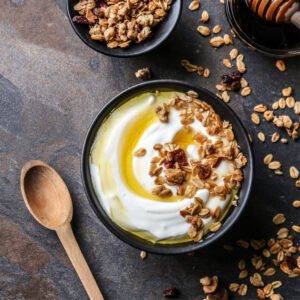
Perhaps, the first food that comes into most people’s minds is yogurt, as it often contains a lot of live and active bacterial cultures. And, yogurt is indeed a good source of probiotics and can improve overall gastrointestinal health. It’s also easy to eat as a snack and contains a lot of other nutrients that are great for your body, like calcium which can improve overall bone health.
You do have to be a bit wary when choosing probiotic yogurts because some brands don’t contain enough good bacteria to really have an impact on your health. Make sure that you read the labels carefully and to also check online to see what studies say.
How to Eat It: It’s a great snack. Add some fruits or even oatmeal as a topping for that extra crunch!
#2. Kefir
Kefir is as healthy as it is delicious. It contains a lot of healthy probiotic bacteria like Lactobacillus acidophilus, Bifidobacterium bifidum, Streptococcus thermophilus, Lactobacillus delbrueckii subsp. bulgaricus, Lactobacillus helveticus, Lactobacillus kefiranofaciens, Lactococcus lactis, and Leuconostoc species. These strains can improve gut health, reduce cholesterol, encourage weight loss and more.
How to Eat It: Drink it as-is or even pour it over your cereal and use it as a substitute for milk!
#3. Kimchi

Kimchi is fermented cabbage and is very popular in Asia. The main probiotic strains that you’d find in this are lactic acid bacteria, which can strengthen your immune system and improve your gut health. These bacteria are also known to treat constipation and improve overall mental health. Some studies also suggest that it has anti-cancer properties.
How to Eat It: This is a great side dish to eat with rice. You can also add it to your noodles or fry it with some meat!
#4. Miso
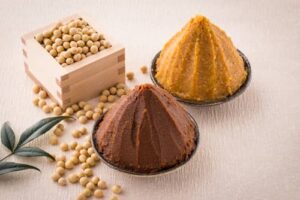
Miso is made from fermented soybeans. It’s popular in Asia and can be used to make a wide range of dishes, like soup, sauces or spreads. The main probiotic strain that you’ll find in this condiment is the Aspergillus oryzae fungus.
Aspergillus oryzae can offer a wide range of health benefits. It’s also rich in many other nutrients. This strain is important for maintaining gut health and can also support and boost your immune system. Some studies have also suggested that it can promote the growth of other healthy bacteria in your gut as well.
How to Eat It: Add the paste to some hot water to make miso soup. You can also use this as a marinate and get some benefits from it as well.
#5. Pickles
If you love pickles and can’t get enough of them, you should eat more of it. However, you really need to pay attention to what type of pickles you’re getting. Pickles made with vinegar don’t contain a lot of probiotic strains; however, fermented pickles do! The type of probiotic strains in the pickles will vary.
How to Eat It: Eat pickles straight out of the jar if you’re looking for a crunchy snack. You can also slice it up and add it to hamburgers and more.
#6. Sauerkraut
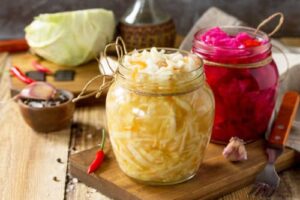 Another superior source of Lactobacillus is sauerkraut. Lactobacillus is great for your gut and can also prevent diarrhea and infections. Best of all, sauerkraut is packed with other essential vitamins, minerals and nutrients.
Another superior source of Lactobacillus is sauerkraut. Lactobacillus is great for your gut and can also prevent diarrhea and infections. Best of all, sauerkraut is packed with other essential vitamins, minerals and nutrients.
How to Eat It: Add it to your hotdog or even to your salad. It also pairs amazingly well with avocados.
#7. Green Olives
Green olives are a type of fermented food although it’s really easy to forget. These delicious treats are actually rich in Lactobacillus, which is a gut-friendly bacteria that comes with many benefits. It can reduce cholesterol, ease weight loss and more, making green olives a great probiotic superfood to have around the house.
How to Eat It: You can slice them up and add them to your salads for an extra zing or even put them on top of your pizza.
#8. Cottage Cheese
Cottage cheese is AMAZING for your gut. It often contains a lot of live and active cultures. You can check the ingredient list for more information on what’s available. It’s also high in many other nutrients, vitamins and minerals, like calcium.
How to Eat It: Mix it with fruits and walnuts or even dip your cucumber slices into it.
#9. Aged, Soft Cheese
Some fermented cheeses contain probiotics. Aged, soft cheese, like cheddar, gruyere, mozzarella and parmesan, contain some beneficial bacteria. The longer that the cheese has aged, the more beneficial the bacteria will be for your body.
While the exact type of strain can be difficult to pinpoint, which is why you should look for the best probiotic supplements for more information if you are looking for a specific strain, you can expect some lactic acid bacteria. These probiotic bacteria can easily thrive and survive in aged, soft cheeses, like cheddar and will even modify their population accordingly.
How to Eat It: Eat it as-is as a snack or pair it with some crackers. It’s absolutely delicious!
#10. Kombucha

Kombucha is made by adding specific strains of bacteria and yeast, as well as sugar, to black or green tea. The beverage is then allowed to ferment for some time before it is consumed. It’s a potential source of probiotics, but the types of bacterial strains will vary depending on the type of SCOBY that’s used. You can either make your own or purchase one online or at a health store.
Although the specific bacteria and yeast strains that are in the kombucha will vary, some studies have looked at what bacterial and yeast strains are most prominent and common. These studies have found that the most common strains include:
- Acetobacter, which is primarily there as a preservative; however, recent studies have shown that this bacterial strain may have anti-cancer properties.
- Lactobacillus, which also includes Lactobacillus Acidophilus. This is a probiotic strain that you’ll often find in probiotics. It offers many health benefits, including the ability to reduce cholesterol, prevent diarrhea, ease irritable bowel syndrome, treat vaginal infections and encourage weight loss.
- Pediococcus, which have been known to have lipid-lowering abilities and anti-cancer and anti-inflammation properties.
- Saccharomyces, which includes a number of yeast strains. Some of these strains are important for a healthy gut and may have anti-diarrhea properties.
Last but not least, kombucha also contains a lot of other healthy nutrients that are great for the body. Although the taste can get some getting used to, it’s a worthwhile drink to add to your shopping list or to make at home.
How to Eat It: It’s a very refreshing drink for the morning that can really give you that extra energy you need to feel motivated!
Supplements versus Probiotic Foods: Which One Is Better?
Your child does not necessarily need to take probiotics in the form of chewable tablets or pills. Some probiotics are added to fermented foods like yogurt or even cultured cottage cheese.
But, is one of them better than the rest? Should children take probiotics?
The answer isn’t that clear-cut. Some studies show that you might be able to get more healthy bacteria into your gut when you eat foods that are high sources of probiotics. However, more research is needed to come to a definitive answer.
Let’s take a quick look at some of the pros and cons of eating probiotics through food rather than supplements
Pros
Cons
- An intake of additional, beneficial nutrients and vitamins with the probiotics
- Wider diversity of probiotic strains in food
- Higher survival rate for probiotic bacteria
- Affordable option in comparison to probiotic supplements
- Unknown amount of probiotics in food leads to difficulties dosing
- Potential effects of probiotic bacteria unknown
Incorporate Some of the Best Probiotic Foods into Your Diet
Adding more probiotic foods into your diet is great for the whole family. It’s beneficial to not only adults, but also to children as well. Fortunately, there are many different ways that you can add these types of foods into your breakfasts, lunches and dinners.
The only issue is that you don’t know which probiotic strain you’ll be consuming if you eat foods that are simply high in healthy bacteria. With that said, consuming these foods should improve your overall health, especially your gut health. It’ll strengthen your gut microbiome and lead to many health benefits.

